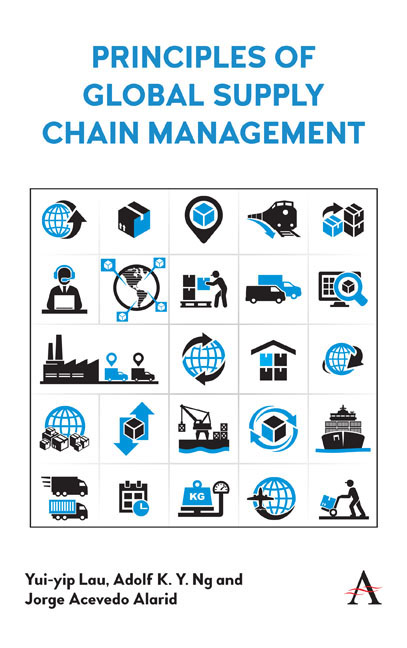Book contents
- Frontmatter
- Contents
- List of Figures
- List of Tables
- Foreword
- Preface
- About the Authors
- 1 Introduction
- 2 Managing Outbound Logistics and Distribution
- 3 Supplier Selection and Procurement
- 4 Warehouse Management
- 5 Case Studies in Food Supply Chains
- 6 Inland Ports in Global Supply Chains
- 7 Climate Change in a Global Environment
- 8 Sustainability in Infrastructure-Based Supply Chains
- 9 Reverse Logistics
- 10 Logistics Associations
- 11 Logistics Education
- 12 Case Exercises in Global Supply Chains
- Appendix
- Index
10 - Logistics Associations
- Frontmatter
- Contents
- List of Figures
- List of Tables
- Foreword
- Preface
- About the Authors
- 1 Introduction
- 2 Managing Outbound Logistics and Distribution
- 3 Supplier Selection and Procurement
- 4 Warehouse Management
- 5 Case Studies in Food Supply Chains
- 6 Inland Ports in Global Supply Chains
- 7 Climate Change in a Global Environment
- 8 Sustainability in Infrastructure-Based Supply Chains
- 9 Reverse Logistics
- 10 Logistics Associations
- 11 Logistics Education
- 12 Case Exercises in Global Supply Chains
- Appendix
- Index
Summary
The emergence of logistics associations generates the tremendous growth in the logistics industry. Logistics associations are one of the important platforms for logistics professionals to meet and generate business opportunities. In this chapter, we will achieve the following objectives:
• study different logistics associations in Asian and Canada regions and
• identify the roles of logistics association.
Introduction
Logistics associations have appeared in the world in the nineteenth century. The growth of these association has spread from the western to eastern regions. In order to align with the ever- changing logistics business practices and employer expectations, logistics associations organize various activities (i.e., seminars, site visits, conferences, social gatherings etc.) and collaborate with academic institutions to deliver different courses and practical examinations. Nowadays, logistics professionals tend to acquire both academic and professional qualifications. It makes good sense for them to obtain various professional qualifications from different logistics associations. In other words, the number of logistics associations is trending rapidly upward since the twentyfirst century.
Why Join a Logistics Association?
Until now, various students and industry participators have been eager to strive to obtain various academic qualifications. The majority of them seriously overlook the significance of professional qualifications obtained from different logistics associations. In this section, we explore the rationale behind you joining a logistics association in the following reasons:
• logistics industry networking opportunities;
• logistics business and professional development;
• advocacy of government policies;
• enriching the logistics knowledge and obtaining updated logistics industry trends through different events such as seminars, site visits, workshops and conferences;
• gaining international recognition;
• accessing logistics education and training; and
• accessing membership directories.
What Are the Top Challenges for Today's Logistics Associations?
• Currently, more and more logistics associations have been established worldwide. In reality, logistics associations are not only encountering stiff competition from various logistics associations, but they are also facing trouble from external forces, including government policy, business environment and sociocultural and technological advancement. In this section, we investigate the top challenges for today's logistics associations.
• motivating young people to join a logistics association;
• keen competition between logistics associations;
• as logistics associations are nonprofit organizations, they strive to enlarge their financial support and human resources; and
- Type
- Chapter
- Information
- Principles of Global Supply Chain Management , pp. 149 - 162Publisher: Anthem PressPrint publication year: 2019

